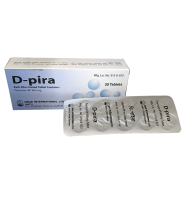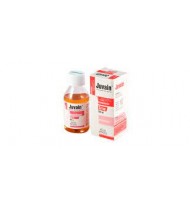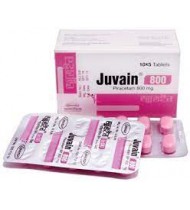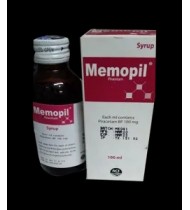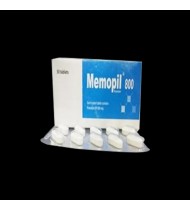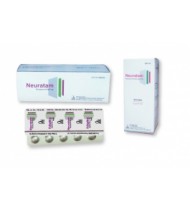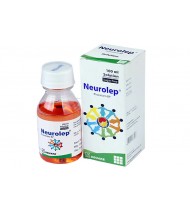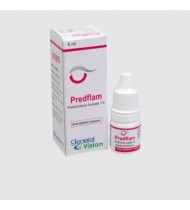Piracetam
Indications
Mental retardation in children: Ease of resuming individual contact, sociability and learning, improved intellectual performances and school results.
Behaviour and psychotic problems in old age: Memory deficits, particularly with regard to fixation and evocation asthenia adaption disorders, disturbed psychomotor reactions. Patients suffering from myoclonus of cortical origin.
Pharmacology
It has been found to increase blood flow and oxygen consumption in parts of the brain, but this may be a side effect of increased brain activity rather than a primary effect or mechanism of action for the drug.
Piracetam improves the function of the neurotransmitter acetylcholine via muscarinic cholinergic (ACh) receptors, which are implicated in memory processes. Furthermore, piracetam may have an effect on NMDA glutamate receptors, which are involved with learning and memory processes. Piracetam is thought to increase cell membrane permeability. Piracetam may exert its global effect on brain neurotransmission via modulation of ion channels (i.e., Na+, K+). It has been found to increase oxygen consumption in the brain, apparently in connection to ATP metabolism, and increases the activity of adenylate kinase in rat brains. Piracetam, while in the brain, appears to increase the synthesis of cytochrome b5, which is a part of the electron transport mechanism in mitochondria. But in the brain, it also increases the permeability of the mitochondria of some intermediaries of the Krebs cycle.
Dosage & Administration
- In cerebro-cortical insufficiency disorders, usual dose is one tablet (800 mg) 3 times a day.
- In myoclonic seizures, a dose of 7.2 gm daily, increasing by 4.8 gm per day every 3 to 4 days up to maximum of 20 gm daily, given in 2 or 3 divided doses.
Parenteral formulations: When parenteral administration is needed (e.g. swallowing difficulties, unconsciousness) Piracetam can be administered intravenously. When treating severe symptoms, 12 g daily may need to be administered as an intravenous infusion.
Interaction
Contraindications
CrCl 60-40 ml/min: Dosage should be 1/2 of normal dose
CrCl 40-20 ml/min: Dosage should be 1/4 of normal dose
Side Effects
Pregnancy & Lactation
Use in Special Populations
Elderly: In the elderly, the half-life of piracetam is increased and the increase is related to the decrease in renal function in this population (see Section Dosage and Administration).
Renal impairment: Piracetam clearance is correlated to creatinine clearance. It is therefore recommended to adjust the daily dose of piracetam based on creatinine clearance in patients with renal impairment
Hepatic impairment: The influence of hepatic impairment on the pharmacokinetics of piracetam has not been evaluated. Because 80 to 100% of the dose is excreted in the urine as unchanged drug, hepatic impairment solely would not be expected to have a significant effect on piracetam elimination.
Overdose Effects
Therapeutic Class
Reconstitution
- Glucose 5%, 10%, 20%
- Fructose 5%, 10%, 20%
- Sodium chloride 0.9%
- Dextran 40 (10% in a 0.9% NaCl solution)
- Ringer Mannitol 20%
- HES solution (Hydroxy Ethyl Starch) 6% and 10%
Storage Conditions
D-Pira Tablet 800 mg
IndicationsCerebral vascular accidents and cerebral insufficiencies: Ischaemic or even haemorrh..
6.00Tk.
Juvain Syrup 500 mg/5 ml
IndicationsCerebral vascular accidents and cerebral insufficiencies: Ischaemic or even haemorrh..
150.57Tk.
Juvain Tablet 800 mg
IndicationsCerebral vascular accidents and cerebral insufficiencies: Ischaemic or even haemorrh..
6.02Tk.
Memopil Syrup 100 ml bottle
IndicationsCerebral vascular accidents and cerebral insufficiencies: Ischaemic or even haemorrh..
151.02Tk.
Memopil Tablet 800 mg
IndicationsCerebral vascular accidents and cerebral insufficiencies: Ischaemic or even haemorrh..
6.04Tk.
Neuratam Syrup 100 ml bottle
IndicationsCerebral vascular accidents and cerebral insufficiencies: Ischaemic or even haemorrh..
150.00Tk.
Neuratam Tablet 800 mg
IndicationsCerebral vascular accidents and cerebral insufficiencies: Ischaemic or even haemorrh..
6.00Tk.
Neurolep Syrup 100 ml bottle
IndicationsCerebral vascular accidents and cerebral insufficiencies: Ischaemic or even haemorrh..
151.02Tk.
Neurolep Tablet 800 mg
IndicationsCerebral vascular accidents and cerebral insufficiencies: Ischaemic or even haemorrh..
6.04Tk.
Piratam Syrup 100 ml bottle
IndicationsCerebral vascular accidents and cerebral insufficiencies: Ischaemic or even haemorrh..
151.00Tk.
Piratam Tablet 800 mg
IndicationsCerebral vascular accidents and cerebral insufficiencies: Ischaemic or even haemorrh..
6.04Tk.

